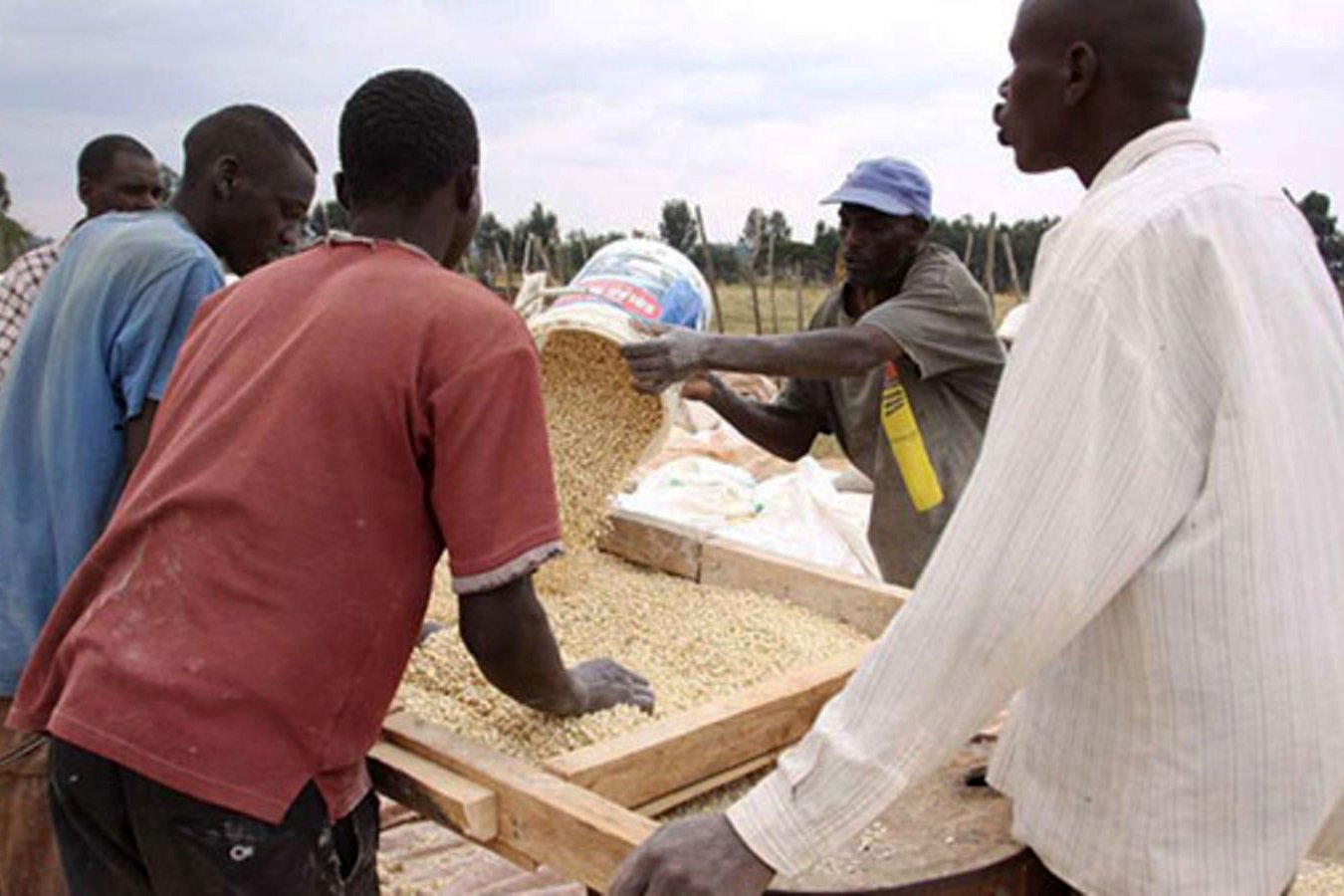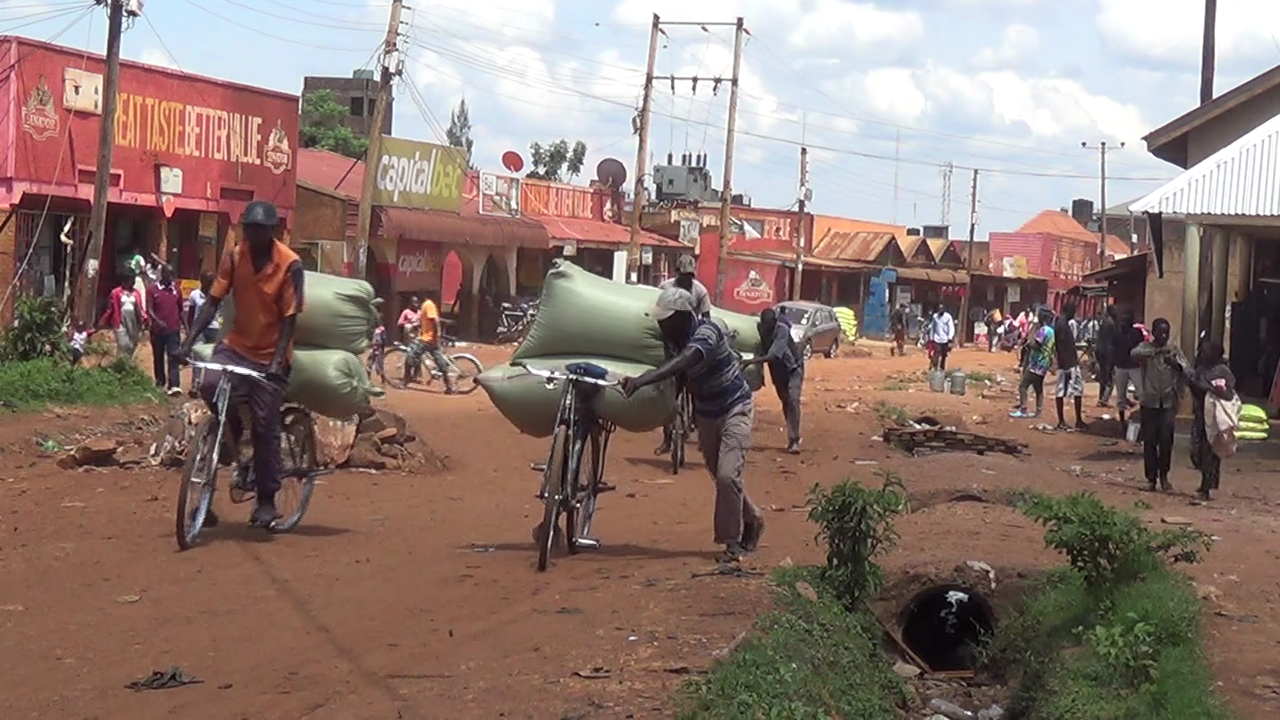Prime
Uganda set to destroy 1,700 tonnes of maize

Employees winnow dried maize in a farm. The agreed aflatoxin B1 levels in foods in EAC is a maximum of five parts per billion (ppb). Photo/File
What you need to know:
- Preliminary results from 1,700 tonnes of maize valued at $2m (Shs7.5b) now indicate failed aflatoxin level tests, Saturday Monitor has established.
Fresh laboratory retests carried out by East African Community (EAC) standards experts have confirmed the presence of high aflatoxin levels in Ugandan maize earlier rejected by South Sudan authorities.
The South Sudan National Bureau of Standards (SSNBS) red-flagged the grains in May before dumping the consignments at the Elegu border post in July. The development caused friction between Kampala and Juba, with the latter questioning the results of the former.
Preliminary results from 1,700 tonnes of maize valued at $2m (Shs7.5b) now indicate failed aflatoxin level tests, Saturday Monitor has established.
“The maize failed to pass EAC agreed permissible limit for aflatoxin B1 in the EAC economic bloc,” Mr Jacob Kabondo, the coordinator of Uganda National Millers Association, said in an interview last week.
The agreed aflatoxin B1 levels in foods in EAC is a maximum of five parts per billion (ppb). Elsewhere, the total aflatoxin limit is 10 parts per billion (ppb). This, experts have told us, is intended to protect the health of consumers. Levels above the maximum, experts add, become toxic so much so that when consumed, they increase the risk of liver cancer and other related diseases.
This has sparked off a blame game, with grain millers pointing an accusing finger at poor storage facilities in South Sudan. The grain millers say the maize was impounded in open space for almost two months and in Uganda for an additional three months.
The retests, which were carried out by the Uganda National Bureau of Standards (UNBS) under the watchful eye of EAC standards experts, started in July and were completed recently.
Blame game
Both the Uganda standards body and millers say the impounded trucks were parked in an open space, 7km away from the Nimule border in South Sudan. This, they proceed to note, exposed the consignments to high temperatures during the day and low ones during the night for two months. The net result per the pair was the creation of a fertile ground for quick spread of aflatoxin-causing agents.
In Uganda, the millers blame border authorities for storing some of the maize in poorly ventilated stores without pallets and in tents for over three months. Not helping matters was the long waiting time for results at UNBS’s Gulu office. Traffic to South Sudan is said to routinely affect the office’s food safety testing centre.
The queue at UNBS’ Gulu office owes to the fact that SSNBS now requires commodities exported in their market to have a certificate of conformity and a certificate of analysis from a reputable laboratory in Uganda. With such tight food safety and standards compliance enforced by South Sudan, transporters of foodstuff to Juba have had to grapple with long waiting times at the standards testing centres in Uganda. The waiting time is anywhere from two days to a week.
Non-tariff barriers
To Ms Jane Nalunga, an international trade expert, these non-tariff measures are uncalled for. Ms Nalunga, who is also the executive directive of Eastern Africa Trade Information and Negotiations Institute (Seatini), says this is especially so in a common market like the EAC that clearly provides for free movement of goods.
The region has suffered arbitrary border closures such as the Rwanda-Uganda one, as well as Kenya rejecting Uganda milk and eggs.
“Therefore, the Sudan issue is not an isolated issue, which sends out a very bad signal to investors,” she told Saturday Monitor, adding, “We have been calling for a review of the EAC treaty to, inter alia, institute a strong independent dispute settlement mechanism so that there is a heavy cost to tampering with the smooth flow of trade within the region.”
Cross-border truckers Saturday Monitor spoke to disclosed that certificates of conformity issued by member states are hardly respected.
“In South Sudan, you can be stopped any time even when you have been cleared at the one-stop border,” Mr Moses Lagu, a truck driver, said.
Border bottlenecks
The other ground UNBS was allowed to carry out the retests is that standards experts from Uganda were unable to physically inspect the impounded grains and cassava flour consignments. This was after the South Sudan standards body raised a red flag on Uganda’s maize consignments, citing its “infestation with living insects.”
Uganda was quick to protest, arguing back then that the majority of the impounded maize and the flour consignments were manufactured by certified companies with valid UNBS permits. Even with these valid grounds, South Sudan stood its ground insisting that the maize be destroyed.
It took the intervention of President Museveni and his South Sudan counterpart, President Salva Kiir, before security and standards authorities released the trucks back to Uganda where the maize was offloaded for retesting.
The two Heads of State also agreed that the consignments that pass the test should be allowed to proceed to Juba and the non-confirming consignments be dealt with in accordance with the Standardisation, Quality Assurance, Metrology and Testing Act.
What next?
Officials at Uganda’s Grain Council, a regulatory body, apportioned blame on unscrupulous grain traders who do not adhere to tight maize handling and processing. The council is pushing for tight regulation and advocating for all maize exports to be processed in Uganda, reasoning that milled maize is not as susceptible to aflatoxins as the grains.
The Grain Council also says the maize market in Uganda has been eroded by open purchase of maize when it is still on the farm. This act is usually perpetuated by traders from the region.
“East African countries have ratified and agreed on a set of minimum standards on all grains. It is only grain that is clean and dried to agreed moisture levels that should be graded, packed in standard bags and allowed to be exported,” Mr Henry Musisi, the director of Uganda Grain Council, said.





